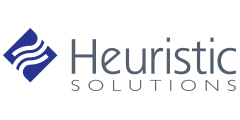Here at Heuristics, we have a general rule of thumb: The less manual data entry required, the better. Wouldn’t you agree?
We apply this rule equally on both sides of the certification, licensure, and education management process. It drives many of the initiatives in our product roadmap because reducing manual work and simplifying data exchange is a top client priority.
While system-to-system integrations eliminate the need for manual data entry and upload, they can also prove challenging. Some data providers might deal with extremely large datasets, and importing them may cause your system to experience performance issues. Other providers might provide a limited data set related to the number of fields but at a high enough volume that it has the same result.
What if a centralized “depot” could facilitate high-volume data exchange and automate the recognition of professional activities and achievements? Could it be easy, scalable, and standardized — without affecting system performance? Now it can: Meet the Learning Hub.
The Learning Hub connects publishers and subscribers of data.
The Learning Hub is a cloud-based database that connects to systems on either end via API call. On one end, a “subscriber” system requests and imports data. The system providing that data adds it to the Learning Hub in response to a subscriber request. That system is the “publisher.”
What kind of data are we talking about? In building the Learning Hub, the vision was to support greater ease in data exchange for continuing education management, eLearning, and other professional development activities.
However, the functionality of the Learning Hub doesn’t end there: This tool can share other data types (like certification status, for example) just as easily in either direction. If you have data that needs to get into your system, the Learning Hub can likely help. It’s the same for data that another system may need from you.
The Learning Hub optimizes data exchange.
The Learning Hub lives between the publishers and subscribers, so it can throttle the data sent to the subscribers to avoid overwhelming them. For instance, if your CE provider releases 100,000 CE records at once, the Learning Hub can manage the transmission of that data into LearningBuilder without affecting your application processing. Because the Learning Hub is fully cloud-native, it can be highly efficient, highly available, and highly resilient.
The Learning Hub reduces risk when interfacing between systems.
The Learning Hub also adds an intermediary layer of security and protection to data exchange. Systems do not call each other’s APIs directly, ensuring neither can negatively affect the data or performance of the other. Subscribers request specific information, publishers provide it, and the ability to view and alter data ends there. Of course, LearningBuilder does both! Whether you need to send or receive data, LearningBuilder can be on either end of the Learning Hub, acting as both subscriber and publisher.
LearningBuilder as Subscriber: Extending data functionality
A configurable LearningBuilder System Template ensures that when a system publishes to the Learning Hub, LearningBuilder can pull that data directly into applications and learning plans to be counted automatically toward candidate requirements.

Data enters LearningBuilder from the Learning Hub via our Enhanced Data Import Tool. This tool not only helps streamline bulk data import but also means that the data can trigger workflow actions, send automated notifications, and even modify applications. It allows for increased specificity regarding data validation rules and can further automate tasks (like changing records and updating cohort cycle dates).
LearningBuilder as Publisher: Sharing information with other systems
The Learning Hub also allows LearningBuilder to share candidate data with authorized databases, verification sources, and other third-party repositories. These systems (like the EverCheck license verification system) can access specific, requested LearningBuilder user activity without a high volume of requests degrading the production performance of your core LearningBuilder system.

LearningBuilder as Publisher and Subscriber: Deepening and refining connections
What if two systems needing to exchange data both use LearningBuilder? For example, member associations that produce learning content might require data on candidate certification statuses, and their associated certification board may need data for a candidate’s completed learning activities. In this case, LearningBuilder can act as the publisher and the subscriber. If one of those parties should happen to stop using LearningBuilder, the other party won’t be negatively affected — no matter which way the data flows.

The LearningBuilder Learning Hub: Robust, repeatable, secure data exchange.
We built the Learning Hub to make it faster, easier, and safer for relevant professional achievement data to move through the credentialing ecosystem. In doing so, we continue our quest to deliver value to your candidates and optimize the staff experience. Are you looking to up-level your software solution and optimize your system-to-system data flow? Schedule a call to find out if LearningBuilder is the right fit for your program needs.



